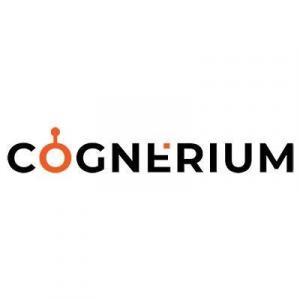Cognerium’s Customer Churn Model Is A Tool For Helping Banks Understand Customer Attrition
Cognerium data scientists conducted a study highlighting how the Customer Churn Model can provide significant value to banks and their marketing departments.
BOCA RATON, FL, UNITED STATES, January 26, 2021 /EINPresswire.com/ -- A case study led by Chief Data Scientist at Cognerium, Rohit Garg, investigated how the Customer Churn Model can help banks understand customer behavior, specifically customer attrition rates. In this study, the client, the marketing team of a U.S. bank, wanted to predict whether a customer will leave the bank in the next year or not.Banks use customer attrition rates as one of their key business metrics because the cost of retaining an existing customer is far less than acquiring a new one. Learning more about customer attrition (customer churn) can help banks make more accurate customer behavior forecasts.
Cognerium data scientists developed the Customer Churn Model, in which tree-based algorithms are utilized to improve accuracy. The key variables identified are state, gender, tenure with the bank, number of products, number of credit cards, transactions in the last six months, credit score, age, and balance.
In order to take this approach, the scientists first identified the variables. This process involved identifying the dependent (response) variable, identifying the independent (explanatory) variables, and variable categorization (numeric, categorical, or Boolean).
Then, the independent variables were analyzed. This analysis identified the prospective explanatory variables that can explain the response variable, made a bivariate analysis of the response variable against independent variables, and conducted variable treatment/transformation.
Finally, the data scientists had to fit the correct model. To do so, they identified important variables, ran the appropriate algorithm, and got the best hyper-parameters. Based on the accuracy, the Gradient Boosting model is selected. However, each approach demonstrated unique advantages and limitations. Tree-based algorithms where the target variable can take a discrete set of values are called classification algorithms.
Decision Tree Algorithm
• The Decision Tree model has a binary tree structure and a decision making logic that is easy to interpret. It is a supervised machine learning algorithm in which the tree’s size can grow to adapt to the complexity of the classification problem.
• Advantages of this model are that it requires less effort for data preparation during pre-processing, and it is very intuitive and easy to explain to stakeholders.
• The Decision Tree model comes with various limitations as well. A minor change in the data can cause a large change in the structure of the decision tree, resulting in instability. Plus, the algorithm is inadequate for applying regression and predicting continuous values.
Random Forest Algorithm
• With the Random Forest model, bagging is used when the goal is to reduce the variance of a decision tree classifier. Here, the objective is to create several subsets of data from a training sample chosen randomly with replacement. Each collection of subset data is then used to train their decision trees.
• There are several advantages to this algorithm. Random Forest reduces over-fitting of the model, handles higher dimensionality data very well, and maintains accuracy for missing data.
• A disadvantage to this model is that since the final prediction is based on the mean predictions from subset trees, it won’t give precise values for the classification and regression model.
Gradient Boosting
• Gradient Boosting is used to create a collection of predictors. In this technique, learners are learned sequentially, with early learners fitting simple models to the data and analyzing data for errors. Consecutive trees (random sample) are fit, and at every step, the goal is to improve the accuracy from the prior tree.
• Two advantages of this model are that it supports different loss functions and works well with interactions.
• There are multiple limitations to Gradient Boosting. The algorithm is prone to over-fitting, plus it requires careful tuning of different hyper-parameters.
Overall, the solution provided the client with more reliable customer management. With the improvement in accuracy, the bank can target the correct set of customers that will churn. The retention rate post-deployment of the Customer Churn Model increased by 12%.
To learn more about Cognerium and the Customer Churn Model, please visit https://www.cognerium.com/.
About Cognerium
Cognerium is a Florida-based financial technology company specializing in AI-enabled Digital Transformations for banks and credit unions. With a vision to build intelligence that can assist humans in solving complex problems, Cognerium built the world’s first AI operating system for banking, financial services, and insurance (BFSI). The company’s services encompass business growth, credit risk and compliance, data strategy governance, and digital experience.
Rohit Garg
Cognerium
contact@cognerium.com
Visit us on social media:
Facebook
Twitter
LinkedIn
Legal Disclaimer:
EIN Presswire provides this news content "as is" without warranty of any kind. We do not accept any responsibility or liability for the accuracy, content, images, videos, licenses, completeness, legality, or reliability of the information contained in this article. If you have any complaints or copyright issues related to this article, kindly contact the author above.

